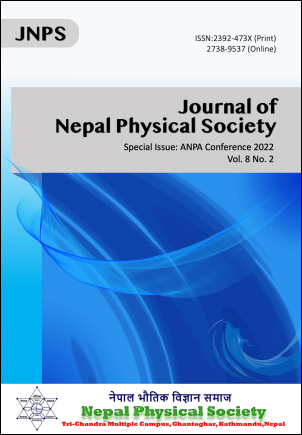Environmental Intelligence using Machine Learning Applications
DOI:
https://doi.org/10.3126/jnphyssoc.v8i2.50148Keywords:
Machine Learning, Remote Sensing, Environmental PhysicsAbstract
The big data deluge has presented us with a unique opportunity to observe the environment. These sensors employ the basic physics principles in sensing the environment. These include but are not limited to, remote sensing of air quality, temperature, or other biophysical variables. Although a great effort has been placed into collecting the data, a greater effort must be placed into their societal applications. Machine Learning tools can provide easy access to build such applications. Continuous monitoring and alerting the interested parties can prevent some undesirable outcomes. For example, a weather forecast is widely used to predict the temperature/precipitation a few days in advance. Similarly, new applications can be developed to practice intelligent decision-making that affects public health. Recent progress in air quality studies is promising to develop such environmental intelligence. In this review article, we illustrate the use of Machine Learning in making predictions and discuss some of the applications of the relevant data sets for Environmental Intelligence.
Downloads
Downloads
Published
How to Cite
Issue
Section
License
All right reserved. No part of this Journal may be reproduced in any form or by any electronic or mechanical means, including information storage and retrieval system, without permission in writing from the publisher, except by a reviewer who may quote brief passage in a review. The views and interpretation in this journal are those of author(s) and they are not attributable to the NPS.




